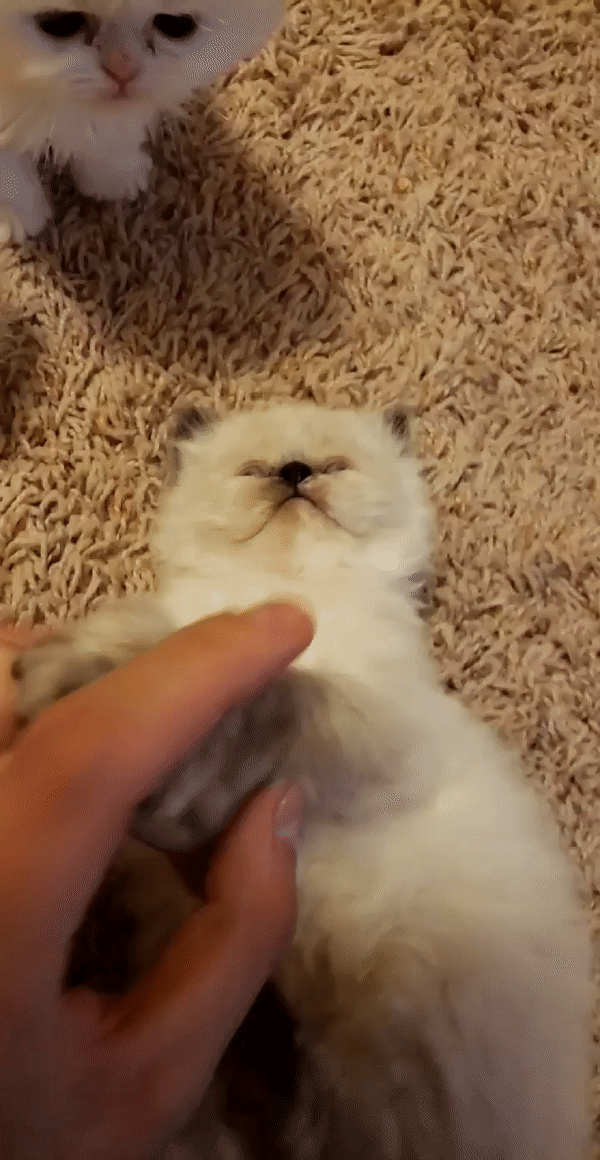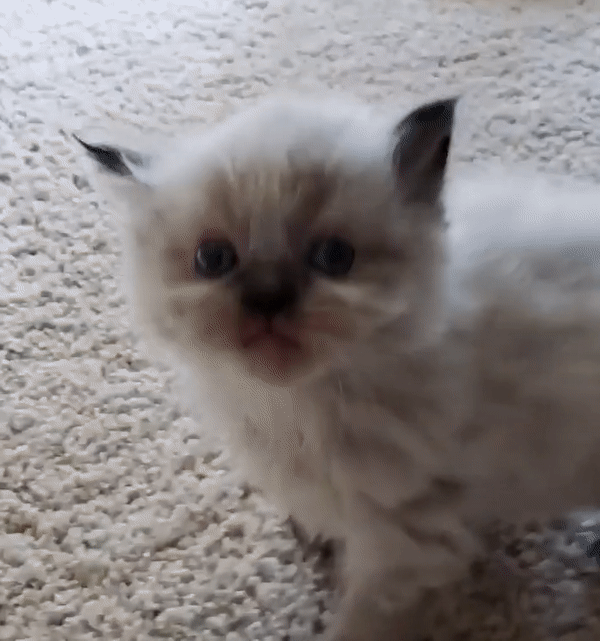Cats don’t have opposable thumbs. “Big deal,” you say, “everyone knows that already.” And that’s true, everyone does know that. But we’re not trying to be profound here, cats can’t grab things without sticking their claws through it. This works well for hunting down gazelle (or your foot from under the couch,) but it’s completely useless for holding something like a toothbrush. This is where you come in. That’s right, here’s another job to add onto your schedule.
The question we’re asking isn’t if you should brush your cat’s teeth, because on a cost-benefit basis, brushing teeth is objectively a good thing. It eliminates your cat’s fishy breath, clears out plaque, and prevents gingivitis. Ultimately, it will save your cat a lot of pain and avoids potential veterinary fees down the line.
Rather, this is a question asking if it’s worth going through the hassle of brushing your cat’s teeth. Teeth brushing is easier said than done; it may seem simple - perhaps even fun - all you do is just move your hands around a little and call it a day. But brushing your cat’s teeth is a lot like belly rubs, some areas of your cat are not meant for touching. And if you overstay your welcome, you’ll get a quick reminder that those claws are not meant for show.

The good news is that after an initial period of struggle, you can train your cat to accept teeth brushing without any issues. It’s also relatively inexpensive and can be done in just a few minutes once you get the hang of things. Here’s how to brush you cat’s teeth:

What You Need:
1. One (unwilling) cat
2. Cat toothbrush
3. Cat toothpaste
4. One Q-Tip
5. Fish sauce/canned tuna/broth
6. Treats
There are two types of toothbrushes for your cat: one that goes over your finger like a glove, or your standard toothbrush. What type of toothpaste you use is entirely up to you, there’s a variety of brands available to choose from so long as you do not use toothpaste made for humans.
Training Your Cat:
Your cat’s dew claw might look like one of the thumbs on your hand, but don’t be fooled by it’s human-like appearance. This claw only serves to rip-and-tear into prey, or in this case, your hands, because your cat is not going to like this at all. Lucky for you, I’m here to teach you how to avoid letting your cat get used to the taste of human flesh.
Step 1: Collect your tools and cat and bring them someplace quiet and stress-free. I will usually do this when I find my cats sleeping since they’ll be a bit groggy and won’t react as negatively to what you’re about to do next.
Step 2: Dip your Q-Tip into something that tastes delicious to cats. Fish sauce, the liquid from a can of tuna, or some unsalted broth all work equally well. The point of this is to practice brushing the cat’s teeth with something that tastes good, this will reinforce good behavior making future brushings easier.
Step 3: Grab your cat’s mouth with your non-dominant hand and tilt their head upwards slightly. Use your fingers to pull their lips so that you can see their teeth. It is often easier to do this from behind since you’ll be able to hold their head steady. This is the part where you cat will squirm and get frustrated, so the sooner you can move onto step 4, the better. If you can have someone help you and hold your cat, it will make things much easier.
Step 4: Take the flavored Q-Tip with your other hand and brush along their gums and canine teeth. Do the best you can here since you might be able to get in 15 seconds of brushing before your cat starts to really get bothered. If you’re not able to do their whole mouth in one sitting, that’s fine. Let your cat go, give them a treat, and hope that they aren’t too mad at you right now. Make sure to clean your tools, too!
Some folks will recommend practicing with just your finger. We don’t recommend this for obvious reasons: first, you can easily get your finger chomped; second, you should practice using a comparable tool that you would be using in the future - remember, this is training for you as well.
Step 5: Continue to do this over the course of a couple weeks. The goal is to get the cat used to brushing with the Q-Tip before moving onto toothpaste. Make sure you wait a couple of days between brushings, you don’t want to traumatize the poor kitty.
Step 6: If you’ve gotten this far, congratulations. Most people will give up on the whole process by now, but not you, champ. Good job, now you can enjoy your cat’s pearly white teeth. You can brush your cats teeth a couple times a week, and continue giving them treats afterwards to encourage good behavior.
The first time you start brushing with toothpaste, you might notice some bleeding from your cat’s gums. This isn’t something to be worried about if it’s a small amount of blood, the same thing happens to people who start flossing. As you continue to brush their teeth regularly and their gums become healthy, the bleeding should stop happening.

As always, it is much easier to train a younger cat than an older one. So the sooner you get brushing, the easier it becomes. The first time we started brushing our cat’s teeth was for Monsieur Fuzz-Fuzz in 2016. He was still a kitten then and he absolutely hated it then. He still hates it now, but at least he tolerates the process.
If all else fails, dental treats are a reasonable alternative. While it’s not as effective as teeth brushing, they can cut down on plaque to a certain extent. There are several veterinarian approved choices to pick from.
Good luck, if you have any questions or need tips, you can reach us at kzoofluffypersians@gmail.com.

